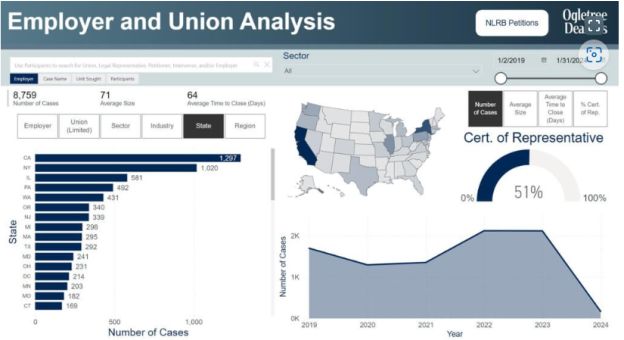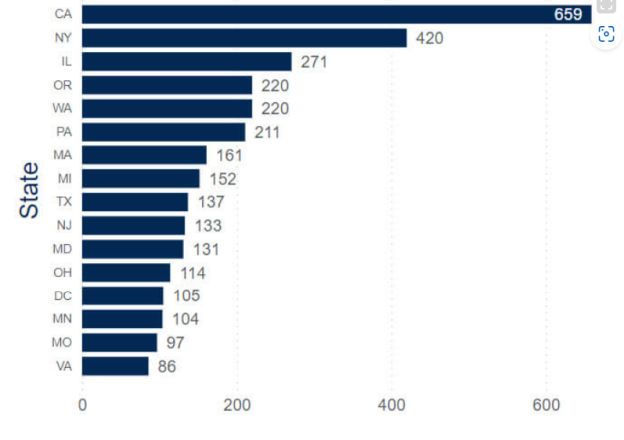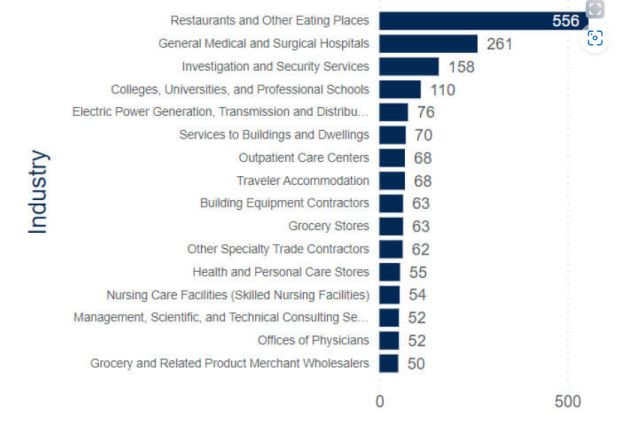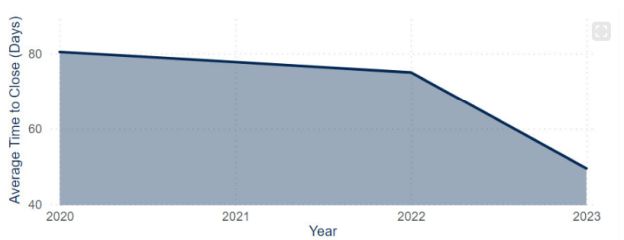Labor organizing activity rose over the past two years with nearly as many representation election (RC) petitions filed with the National Labor Relations Board (NLRB) from 2022 through 2023 as the previous three years, while the average time to close petitions saw a significant drop in 2023, according to public filing data compiled by Ogletree Deakins.
Quick Hits
- The number of representation election petitions filed increased in 2022 and 2023 from the prior three years.
- The restaurant industry jumped to the top of the list of industries in terms of number of petitions filed between 2022 and 2023.
- California, New York, and Illinois remained the top states for petition filings, joined by Oregon and Washington.
- Petitions are being processed much more quickly.
Following the end of the pandemic and amid several precedent-shifting NLRB decisions, a total of 4,242 RC petitions were filed with the NLRB from the beginning of 2022 through 2023, nearly topping the 4,347 filed from the beginning of 2019 through 2021.
The average proposed unit size jumped to eight-eight from fifty-four and the average time to close dropped from sixty-six days to sixty-three days between those same periods respectively.
The uptick in activity was driven by an influx of petitions filed on the West Coast as Oregon and Washington joined California in the top five states in the number of RC petitions from 2022 to 2023, and by a rise of petitions in the restaurant industry, which jumped to the top of industries.
Ogletree Deakins' NLRB Union Election Petitions Tracker

West Coast Leads in Petitions Filed
California, New York, and Illinois remained the top three states in the number of RC petitions filed in 2022 and 2023 as compared to the beginning of 2019 through 2021, while Oregon and Washington replaced Pennsylvania and New Jersey in the top five. California increased its lead as the top state in the number of filings, with 15.5 percent of petitions filed in 2022 through 2023, compared to 14.3 percent filed from the beginning of 2019 through 2021.
NLRB Election Petitions by State 2022–2023

Restaurants Outpace Healthcare in Petitions Filed
According to the tracker's breakdown by industry, the restaurant industry, specifically the "Restaurants and Other Eating Places" category, jumped to the top of the list of industries in the number of petitions filed, accounting for more than 13 percent of the overall petitions filed in 2022 and 2023. Still, the healthcare industry, or "General Medical and Surgical Hospitals," which topped industries in terms of the number of petitions filed from 2019 through 2021, continued to see a significant chunk of the labor activity, ranking second in the number of petitions filed from 2022 through 2023.
NLRB Election Petitions by Industry 2022–2023

Petitions Close Faster
According to the tracker, the average time to close after a petition is filed (a calculation of the difference between "Open" and "Closed" date only taking into account closed matters) for 2022 through 2023 was sixty-three days, down from an average time to close of sixty-six days over the prior three years. The decline comes as the average time to close had increased to an average of seventy-seven days between 2020 and 2022, with a noticeable drop in 2023 down to forty-nine days.
It is anticipated that the time between the filing of a petition and an election will continue to shrink in 2024 as the expedited election rules adopted by the NLRB in August 2023 take full effect.
Average Time for Election Petitions to Close 2020–2023

The data was compiled using Ogletree Deakins' new NLRB Union Election Petitions Tracker (which is available to clients subscribed to Ogletree Deakins' Client Portal). The tracker enables users to compile, sort, and review public data from the NLRB going back to the beginning of 2019 to gain insights by region, state, employer, union, and industry sector or review the number of petitions by average group size of participants, average number of days to close, and the proportion of petitions that resulted in a Certificate of Representative.
The content of this article is intended to provide a general guide to the subject matter. Specialist advice should be sought about your specific circumstances.



